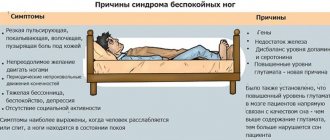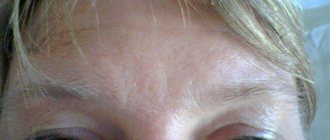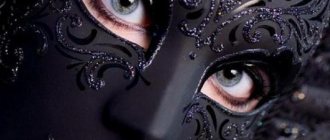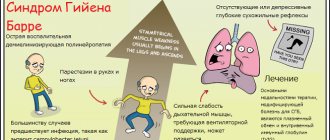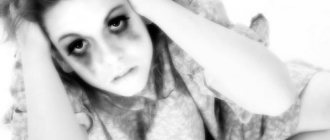Find out more about other diseases starting with the letter “C”: Compression of the brain; Senile chorea; Sensitive ataxia; Serous meningitis; "Rigid person" syndrome; Alien hand syndrome; Restless legs syndrome; Bogorad syndrome; West syndrome; Gaye-Wernicke syndrome; Guillain-Barre syndrome; Piriformis syndrome; Carpal tunnel syndrome; Carotid sinus syndrome; Kleine-Levin syndrome; Klippel-Feil syndrome; Cauda equina syndrome; Crumpy syndrome; Lambert-Eaton syndrome; Landau-Kleffner syndrome.
Description of Kleine-Levin syndrome
Kleine-Levin syndrome is a rare neurological disorder characterized by changes in sleep and wake patterns. Due to the rarity of the disease, the mechanism of occurrence of attacks is under study. The main manifestation of the disease is an extremely long period of sleep (up to 18 hours), interrupted by short stages of wakefulness. When the patient wakes up, he feels very hungry. Behavior and mental manifestations undergo significant changes.
The first description of the pathology appeared at the end of the 18th century. The German specialist Kleine studied the abnormal condition in detail; his first works on this disease were published in 1825. Significant additions were made by the American doctor M. Lewin in the mid-20th century. The syndrome was named after these scientists. Another common name in clinical theory is the term "sleeping beauty syndrome." The incidence of pathology is up to 2 recorded cases per 1 million people. The syndrome is observed in adolescents, and males are more often affected.
Ways to combat sleeping beauty syndrome
Sleeping beauty syndrome or Kleine-Levin syndrome is an extremely rare disease and therefore poorly understood. It is currently not possible to completely eliminate its causes. If it has already begun, the patient is sent to a hospital, where doctors try to stop the progress of hibernation. To mitigate the symptoms of the syndrome, the help of a psychologist is needed. It is also irreplaceable when the sleeping “handsome man” or “beauty” has already left the “embraces of Morpheus.” The psychotherapist will teach loved ones how to behave in such a situation so that their behavior does not harm the awakened person.
Treatment of sleeping beauty syndrome in a hospital
That such an extremely rare disease is incurable is emphasized by a case that occurred in the Urals.
There, in an ordinary family, a girl with sleeping beauty syndrome appeared. And now doctors have been monitoring her for more than a year, but they can’t do anything. The little girl was only five months old when she suddenly fell asleep, she was taken to the hospital, where she woke up only two days later. And she acted as if nothing had happened. A few days later the girl fell asleep again. The analyzes did not clarify anything. The heart, brain, nervous system were in perfect order. Only when the child woke up did his temperature rise slightly. And so this is a completely ordinary child, he is capricious in moderation, like all children at that age.
They checked the parents, but they turned out to be healthy. Air, water, and background radiation samples in the apartment were also normal. The doctors just threw up their hands in bewilderment and diagnosed the child with “hypersomnia of unknown origin,” that is, the girl has a pathological sleep, and why this is so is completely unclear.
And for more than a year now, Anya Metelkina has been sleeping for up to six days in a row. Not only Russian doctors became interested in this phenomenon. Specialists from Germany and the UK are ready to provide assistance. In the meantime, the girl is “resting,” waking up periodically.
Parents are not at all happy with the sleeping beauty syndrome that nature has given their daughter. We can only hope that with age the girl will “outgrow” her illness. And everything will be decided by itself. In any case, the statistics of this disease indicate that it often goes away without medical intervention.
In especially severe cases, when mental disorders manifest themselves against the background of Kleine-Levin syndrome, patients are placed in a psychiatric hospital. More often, such patients are prescribed psychostimulants. These can be tranquilizers, antidepressants, antipsychotics. Lithium preparations have especially proven themselves. Together, all these medications reduce periods of hibernation and smooth out other negative symptoms of the disease.
Sometimes electroconvulsive therapy (electric shock) is prescribed, when a small current pulse is applied to the brain, trying in this way to bring the patient to “feeling”. This method was also used on the Ural girl, but to no avail.
It is important to know! Doctors will only help the patient feel more “comfortable”. They are not able to completely remove him from the state of hypersomnia.
Psychological methods of treating sleeping beauty syndrome
Psychological methods of treating Kleine-Levin syndrome primarily include psychoanalysis.
Sometimes they use art therapy and symbol drama techniques. Let's take a closer look at the features of psychological assistance:
- Psychoanalysis
. Psychoanalysis is based on Freud's teaching about the combination of the conscious and unconscious, the role of sexual experiences in individual behavior. The psychotherapist invites the patient to express everything that hurts in his soul, and he listens carefully. Communicating freely, the patient unconsciously expresses his anxieties, deeply hidden in the subconscious. Analysis of involuntary experiences helps to identify the causes of the disease. Psychoanalytic methods such as dream interpretation and error analysis are also aimed at this. - Art therapy
. The art therapy method involves treatment with art and creativity. Psychological correction of personality occurs by influencing emotions. This technique is especially valuable when working with children. If a child is sick with sleeping beauty syndrome, this technique will help him more easily endure the inconveniences associated with the disease and strengthen his mental health. An example is such an interesting technique as puppet therapy, when with the help of puppet theater one can successfully influence the psycho-emotional state of sick children and adolescents and correct their behavior. - Symboldrama
. A very effective method of psychotherapy, which is also called “waking dreams”. It is the work of the imagination. The patient is given a topic or chooses it himself, and then plays out the situation as he perceives it. The psychotherapist observes as if from the outside, and later analyzes the behavior and psycho-emotional state of the patient. Based on this, he draws his conclusions and gives recommendations on how to behave. For example, before an exacerbation of Kleine-Levin syndrome or after its attack.
All these are only auxiliary methods of treating sleeping beauty syndrome. They help the patient understand his illness in order to ease its course.
Help from loved ones with sleeping beauty syndrome
The role of relatives here is extremely important.
Without them, a person who is ill is literally like without hands. This is eloquently emphasized by the case of the Ural girl Anya. Parents put their daughter to bed, monitor her condition during sleep, and wake her up to feed her. Without them, the little man is simply helpless. If the sick person is much older, he still will not be able to cope without outside help. Only close people will help him survive his syndrome and get back into the normal rhythm of life.
So that loved ones know how to deal with sleeping beauty syndrome, they also need the help of a psychologist. He will teach them how to properly treat the sick.
What is sleeping beauty syndrome - watch the video:
There are no more than 1000 people around the world with such a rare and strange disease as sleeping beauty syndrome. This is a disease of childhood and youth, in most cases it is associated with hormonal changes in the body in adolescents. Although experts suggest various reasons that can cause it, the disease is considered incurable, but this does not mean that everything is so hopeless. Statistics convincingly show that over the years, hypersomnia can go away on its own. And then the person suffering from it returns to a healthy lifestyle.
Factors in the development of the disease
The nature of the disease has not been fully determined. Most neurologists and psychiatrists tend to assume that the syndrome is based on an autoimmune etiology. The principle of the theory is that as a result of a cold, encephalitis develops, limited only to the hypothalamus zone. This section contains cells that produce elements (orexins) that affect drowsiness and wakefulness. Inhibition of orexins reduces the production of a substance that excites the cerebral cortex. The body goes into a sleep state.
During the period of age-related changes in the body, hormonal disruptions occur, which serve as a favorable basis for the development of pathology. The disease can also be triggered by traumatic brain injury, viral infection, generalized infection (sepsis), and long-term high body temperature. Cases of familial incidence are recorded, which suggests the genetic nature of the anomaly. So a number of experts believe that the syndrome is congenital, genetically determined. This disease develops under the influence of hormonal changes in adolescence, with the presence of provoking factors.
Causes of the syndrome
The exact causes of the disease are not clear. Experts put forward several versions:
- hypothalamic dysfunction;
- the result of organic brain damage after neuroinfection;
- influence of heredity;
- dysfunction of the immune system;
- death of orexin neurons, which are responsible for the sleep-wake cycle.
During the study, during episodes of hypersomnia, the following were observed: premature onset of the REM sleep phase and a decrease in the duration of slow-wave sleep, high-amplitude bursts of activity, slowing of metabolism in the thalamus, medial (inner) frontal and temporal lobes of the brain, decreased sugar levels, insufficiency of blood supply in the hypothalamus.
Reasons that increase the likelihood of developing Klein-Levin syndrome include diseases that arose in the perinatal period, birth injuries, and heredity.
Since the disease is diagnosed quite rarely, doctors have not yet established the cause of the disease. Most experts believe that the main cause may be various types of disorders in the reticular formation of the brain. In addition, the hypothalamus and limbic system may be the basis for the occurrence of the syndrome.
The activator for the development of the disease can be hormonal changes that occur during adolescence. Thus, it becomes clear that the syndrome occurs in patients aged twelve to sixteen years.
According to research, it can also be established that the root cause of the disease can be head injuries, viruses and increased body temperature for unexplained reasons. A group of specialists also include heredity as the reasons for the development of the syndrome, when only men suffered from this disease. Scientists agree that the disease is based on a certain defect in the genes, which is the cause of a malfunction in the functioning of the limbic system of the brain and hypothalamus.
Signs of pathology
The main symptom of the disease is a long period of increased drowsiness, lasting from several days to two months. The sleep stage lasts 18-20 hours a day. A teenager wakes up only to correct the natural needs of the body. If a person is awakened by force, this is fraught with subsequent aggressiveness and an inadequate mental reaction of the patient. If the patient wakes up on his own, he does not feel a surge of strength from a long sleep. A few hours later the next fall asleep occurs. In the interval, the teenager is not able to control eating behavior, since severe hunger does not go away even with abundant food consumption.
Against the background of the underlying disease, bulimia develops, when the patient consumes everything edible that he can find. In this case, taste preferences are not observed, food compatibility is not taken into account. Mental abnormalities at this stage include:
- increased aggression towards others and the current situation;
- inappropriate sexuality;
- emotional disruptions;
- excitability of motor skills, movements;
- directed consciousness, narrowed to satisfy natural needs;
- hallucinations;
- signs of schizophrenic disorder.
From the physiological side, the following dysfunctions are determined:
- increased sweating;
- change in color of the limbs, fingers, nasolabial triangle towards cyanosis;
- darkening of under-eye circles.
After the end of the attack stage, the patient does not remember anything that happened during this period. He believes that he simply woke up the next day after falling asleep. The frequency of attacks is 2-3 periods per year. The patient completely drops out of life, loses the ability to learn, participate in public and social activities. Between the abnormal stages, the teenager is completely healthy, emotionally and physically feeling normal. The only physiological consequence is the gain of excess body weight, which is the result of experienced bulimia.
Notes
- ↑ 1 2 3 N. N. Ivanets, Yu. G. Tyulpin, V. V. Chirko, M. A. Kinkulkina.
Psychiatry and narcology: textbook. - M.: GEOTAR-Media, 2006. - P. 280. - 832 p. — ISBN 5-9704-0197-8. - Ramdurg, 2010, p. 242.
- Ramdurg, 2010, p. 242-243.
- Ramdurg, 2010, p. 243.
- [www.whonamedit.com/synd.cfm/1398.html Kleine-Levin syndrome]. Whonamedit? A dictionary of medical eponyms. Retrieved April 30, 2014.
- Oliveira M. M., Conti C., Saconato H., Fernandes do Prado G. (2013). "Pharmacological Treatment for Kleine-Levin Syndrome". Cochrane Database of Systematic Reviews 8
: CD006685. DOI:10.1002/14651858.CD006685.pub3. PMID 23945927. - ↑ 1 2 3 4
Ramdurg, 2010, p. 244.
Diagnostic methods
The diagnosis is made by a neurologist who relies on anamnesis. A characteristic feature of the patient’s physiology also helps to distinguish Klein-Levin syndrome from other pathologies (depression, narcolepsy, lethargic encephalitis, somnambulism): during attacks there is no uncontrolled urinary incontinence and oculomotor abnormalities. Neurological disorders are not recorded. But in order to differentiate the disease, instrumental diagnostic methods are used:
- EEG. Measuring the conduction of waves through neurons shows abnormal slowing of the rhythm. Sometimes bursts of an electronic nature are recorded in the area of the temples and crown of the head.
- Polysomnography. The entire sleep period is divided into “fast” and “slow” phases. In patients with the syndrome, shortened stages of the third and fourth phases are recorded. If the “fast” phases last less than ten minutes, this indicates a moderate severity of the disease. If the duration takes less than five minutes, it indicates a severe disorder.
- PET-CT of the brain. Diagnosis is carried out both in the intermediate period and during the attack. In a normal state, brain activity disorders are not detected. The picture changes in the stage of prolonged sleep. Metabolic processes are no longer recorded in the areas of the thalamus and hypothalamus. The data obtained by this method fully confirms the nature of the disease.
Hardware diagnostics using PET-CT allows one hundred percent confirmation of the diagnosis. Diagnostics are carried out only in specialized medical organizations that have the necessary equipment. The pages of the Mrt-v-msk portal contain a complete list of clinics providing consultations in this area. Users of the portal can not only choose the nearest diagnostic institution in any district of the city, but also compare centers by rating, prices for services, and read reviews of patients who have been examined.
To register for the procedure, you can use the contact phone number of the city registration service. The number is located at the top of the Mrt-v-msk page. Call center operators will answer questions regarding diagnostics and preparation for it, guide you to the nearest clinics, and book free time for a session. Consultation and registration are free of charge.
Literature
- Arnulf I., Lin L., Gadoth N., File J., Lecendreux M., Franco P. et al. (2008). "Kleine-Levin syndrome: a systematic study of 108 patients." Ann Neurol 63
(4):482–93. DOI:10.1002/ana.21333. PMID 18438947. (English) - Landtblom A. M., Dige N., Schwerdt K., Säfström P., Granérus G. (2003). "Short-term memory dysfunction in Kleine-Levin syndrome." Acta Neurol Scand 108
(5):363–7. PMID 14616308. (English) - Schenck CH, Arnulf I., Mahowald MW (2007). “Sleep and sex: what can go wrong? A review of the literature on sleep related disorders and abnormal sexual behaviors and experiences.” Sleep 30
(6):683–702. PMID 17580590. (English) - Justo L.P., Calil H.M., Prado-Bolognani S.A., Muszkat M. (2007). "Kleine-Levin syndrome: interface between neurology and psychiatry." Arq Neuropsiquiatr 65
(1):150–2. PMID 17420845. (English) - Santosh Ramdurg.
Kleine–Levin Syndrome: Etiology, Diagnosis, and Treatment // Annals of Indian Academy of Neurology. - 2010. - T. 13, issue. 4. - P. 241–6. — DOI:10.4103/0972-2327.74185. - PMIDSleep disorders Parasomnias Catathrenia • Nightmare • Night terror • Sleep talking • Sexsomnia • Somnambulism • Sleep paralysis Sleep culture Alarm Clock • World Sleep Day • Inemuri • Lullaby • Sleep Mask • Lucid Dreaming • Dream Book • Bedroom • Snoring
Treatment options
A specific treatment method is under development. Since the syndrome belongs to rare categories, it is not possible to test and prove the effectiveness of specific drugs. Restorative measures are aimed at reducing symptomatic manifestations:
- Getting rid of constant drowsiness. The main goal of treatment is to reduce the time the patient spends sleeping. Psychostimulant pharmaceuticals are used in this area.
- Covering mental disorders. Aimed at getting rid of bulimia, aggression and changes in consciousness. The use of antidepressants, neuroleptic drugs and tranquilizers has shown inconsistency. A greater effect was achieved with the use of lithium drugs.
Therapy
To eliminate drowsiness, psychostimulants are used, for example, methylphenidate, modafinil, D-amphetamine, amphetamine, ephedrine, methamphetamine, pemoline-piracetam-meclofenoxate[6][7]. Lithium preparations are used to improve pathological behavior and reduce the duration of episodes[7].
Various case reports have shown that drugs such as haloperidol, chlorpromazine, risperidone, trifluoroperazine, levomepromazine, thioridazine, clozapine and flumazenil are ineffective[7]. Electroconvulsive therapy and insulin comas have also not shown effectiveness[7].
Forecast and preventive measures
The prognosis for full recovery is favorable. Over time, there is a gradual lengthening of the intervals between attacks. Periods of hypersomnia are shortened. The patient recovers independently. No residual neurological impairment is observed. The course of the disease can take from 10 to 14 years. The longest period in the clinical literature is 18 years.
Since the nature of Kleine-Levin syndrome has not yet been determined, specialists have not developed preventive recommendations. The disease is at the research stage.
Information sources:
- On the issue of the etiology, clinical picture and diagnosis of Kleine-Levin syndrome / Ulyanova O.V., Kutashov V.A.// Saratov Medical Scientific Journal. - 2020.
- Kleine-Levin syndrome. Modern data and description of three cases / Toropina G.G., Yakhno N.N.// Neurological Journal. – 2016.
- Kleine-Levin syndrome while taking recreational drugs / Semenova E.I., Tokareva Yu.V., Belova Yu.A., Kotov A.S., Eliseev Yu.V.// Russian Journal of Child Neurology. – 2020.
- Modern classification of hypersomnias, their diagnosis and treatment / Strygin K.N. // Effective pharmacotherapy. – 2020 – No. 53.
story
In 1815 there was a report of a young man who showed excessive appetite and prolonged sleep after experiencing a fever; this may be an early description of the condition. Another case with similar symptoms was described by Brierre de Boismont in 1862.
Five patients with symptoms of persistent sleepiness were described in detail in 1925 by Willi Kleine, a neurologist from Frankfurt. This report followed four years later on the details of a similar case in New York by psychiatrist Max Levine. In 1935, Lewin published information on several more cases, including one described by Kleine.
Levine noted that some patients exhibited an intense appetite in addition to constant fatigue. MacDonald Critchley, who first wrote about the condition in 1942, described 11 cases he reviewed and reviewed 15 other published cases in his 1962 publication. In a report that included patients he reviewed in the Royal Navy during the Second World War, he noted that irritability and depersonalization often occurred while patients were waking up.
He named the condition Klein-Levin syndrome and noted four common features: hypersexuality, adolescent onset, spontaneous resolution, and compulsive eating. He believed that the condition affected only men, but later studies showed some female patients. In the 1970s, several psychoanalytic and psychodynamic explanations for the condition were proposed. In 1980, a Hawaiian Caucasian family was found in which nine family members suffered from the disease.
The diagnostic criteria for KLS were created by Schmidt in 1990, and the International Classification of Sleep Disorders has refined them. KLS is classified as a sleep disorder, specifically one of recurrent hypersomnia. Until 2005, it was believed that hyperphagia and hypersexuality occurred in all cases. This was changed with guidelines published that same year, which noted that they were not always present.

